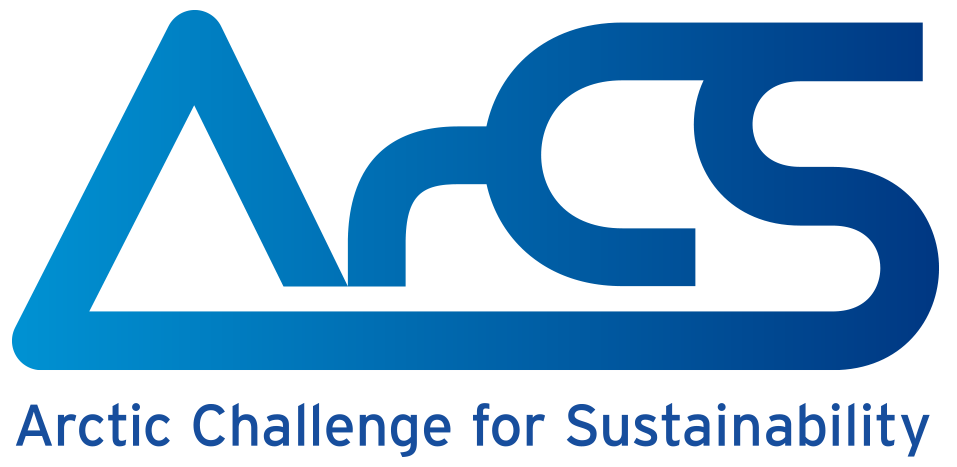2018 First Report
Atmosphere and Ocean Research Institute, The University of Tokyo
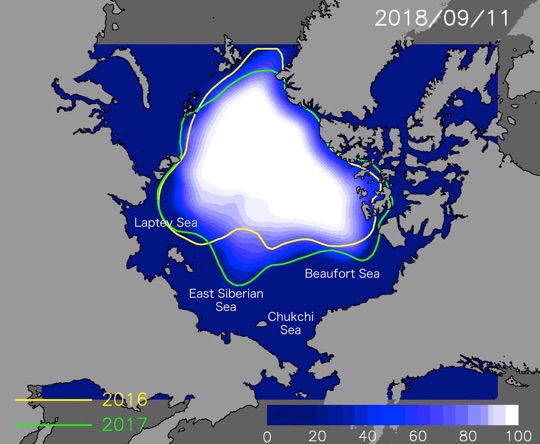
- Minimum ice extent in September will be about 4.66 million square kilometer.
- Sea ice area will retreat with nearly same speed as last year.
- Sea routes of Russian side and Canadian side will both open. Russian side will open around August 15, and the Canadian side except for Canadian archipelago will open around July 15.
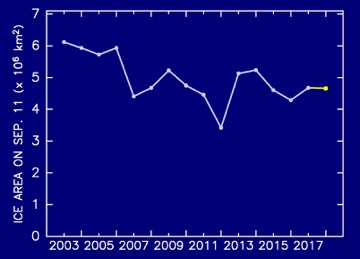
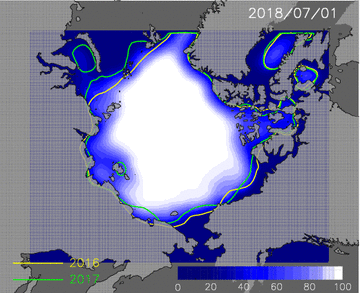
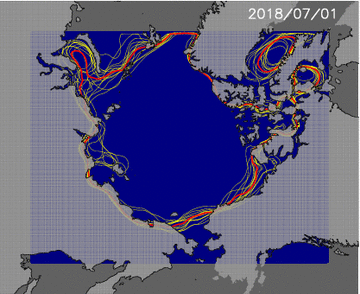
Sea ice extent on September 11, which is the minimal phase of Arctic sea ice, is expected to be 4.66 million square kilometer, which is 1.7% smaller than the last year’s minimum area.
Sea ice cover in the Laptev and East Siberian Seas will retreat with nearly same speed as last year. Sea routes of the Russian side will open around August 15, which is faster than the last year.
Sea routes of the Canadian side except for Canadian archipelago will open around the July 15.Minimum sea ice cover in September of this year will be very similar to that of the last year.
Prediction map is also available in Arctic Data Archive System of National Institute of Polar Research.
Method of this Prediction
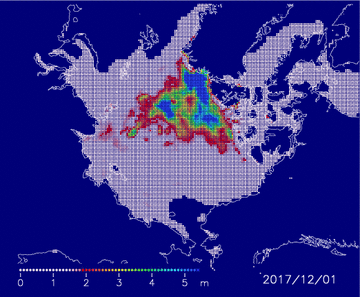
December 1, 2017 through April 30, 2018. The color bar
indicates the thickness of the ice on December 1, 2017.
This prediction is based on our recent research (Kimura et al., 2013) showing a relationship between winter ice motion and summer ice cover. First, we estimate the ice thickness in spring from the movement of sea ice from December to April. Then, we predict the summer ice area depending on the assumption that thick ice remains later and thin ice melts sooner than the average.
To calculate the movement of the sea ice, we distributed particles over the ice cover on December 1, and traced the trajectories of the particles to the end of April, by using the satellite derived daily ice velocity (Figure 5). Data from satellite microwave sensors AMSR-E (2002/03- 2010/11) and AMSR2 (2012/13- 2016/17) was used to derive the daily ice velocity. We also considered initial ice thickness for each particle on December 1 calculated by the method of Krishfield et al. (2014). Based on the linear relationship between the thickness-weighted particle concentration on April 30 and sea ice concentration on a specific day in summer, we predicted the ice area on the specific day in this summer.
References
Kimura, N., A. Nishimura, Y. Tanaka and H. Yamaguchi, Influence of winter sea ice motion on summer ice cover in the Arctic, Polar Research, 32, 20193, 2013.
Krishfield, R. A., Proshutinsky, A., Tateyama, K., Williams, W. J., Carmack, E. C., McLaughlin, F. A., and Timmermans, M. L., Deterioration of perennial sea ice in the Beaufort Gyre from 2003 to 2012 and its impact on the oceanic freshwater cycle, J. Geophys. Res., 119, 1271-1305, doi:10.1002/2013JC008999, 2014.
If you have any questions about satellite monitoring of the Arctic Ocean, sea ice forecasting, or the forecasting methods used here, please contact the Sea Ice Information Center(sea_ice@nipr.ac.jp)
The research for this forecast method was started in GRENE Project. The sea ice forecast was conducted in ArCS Project (FY2015-2019).


